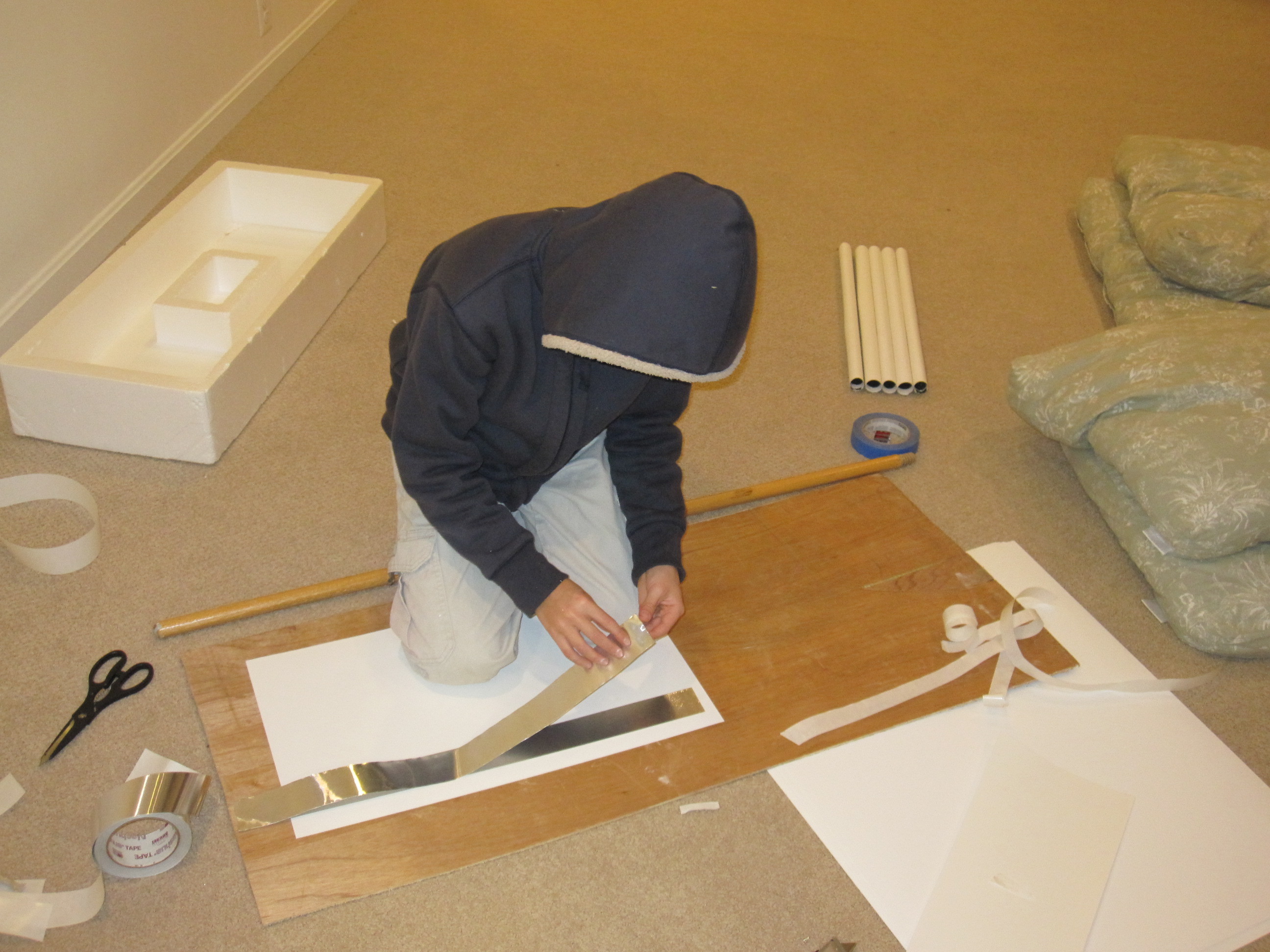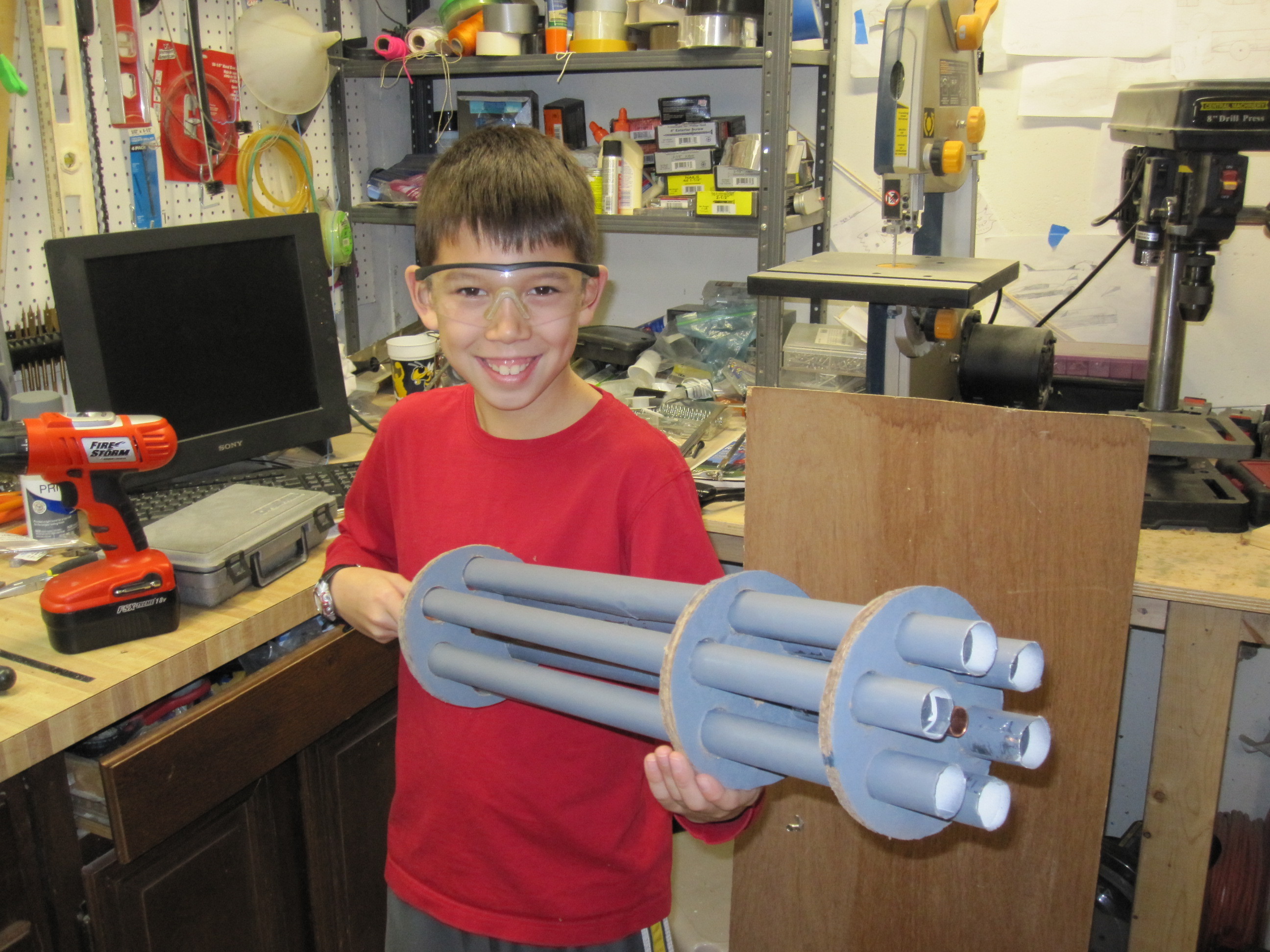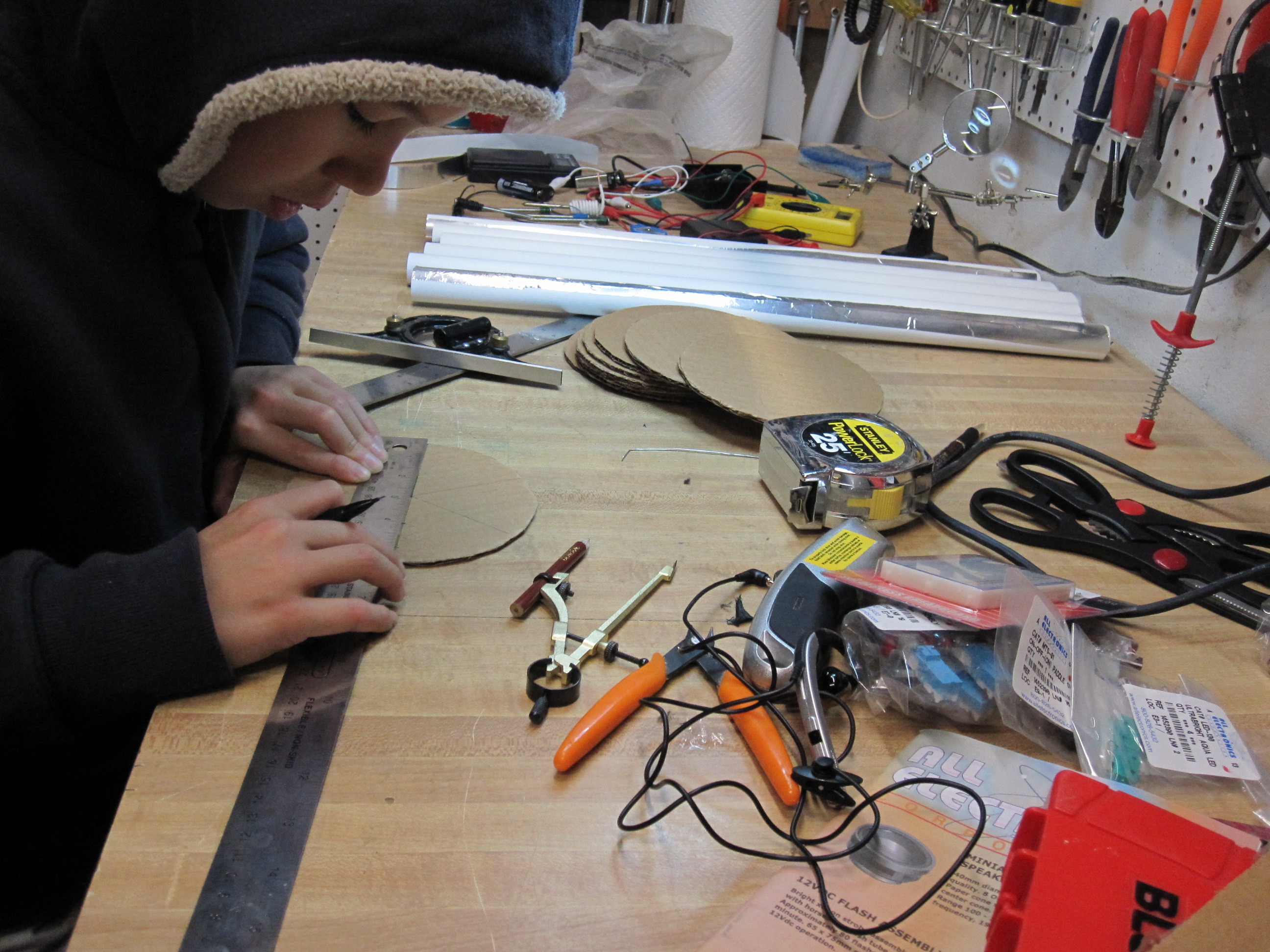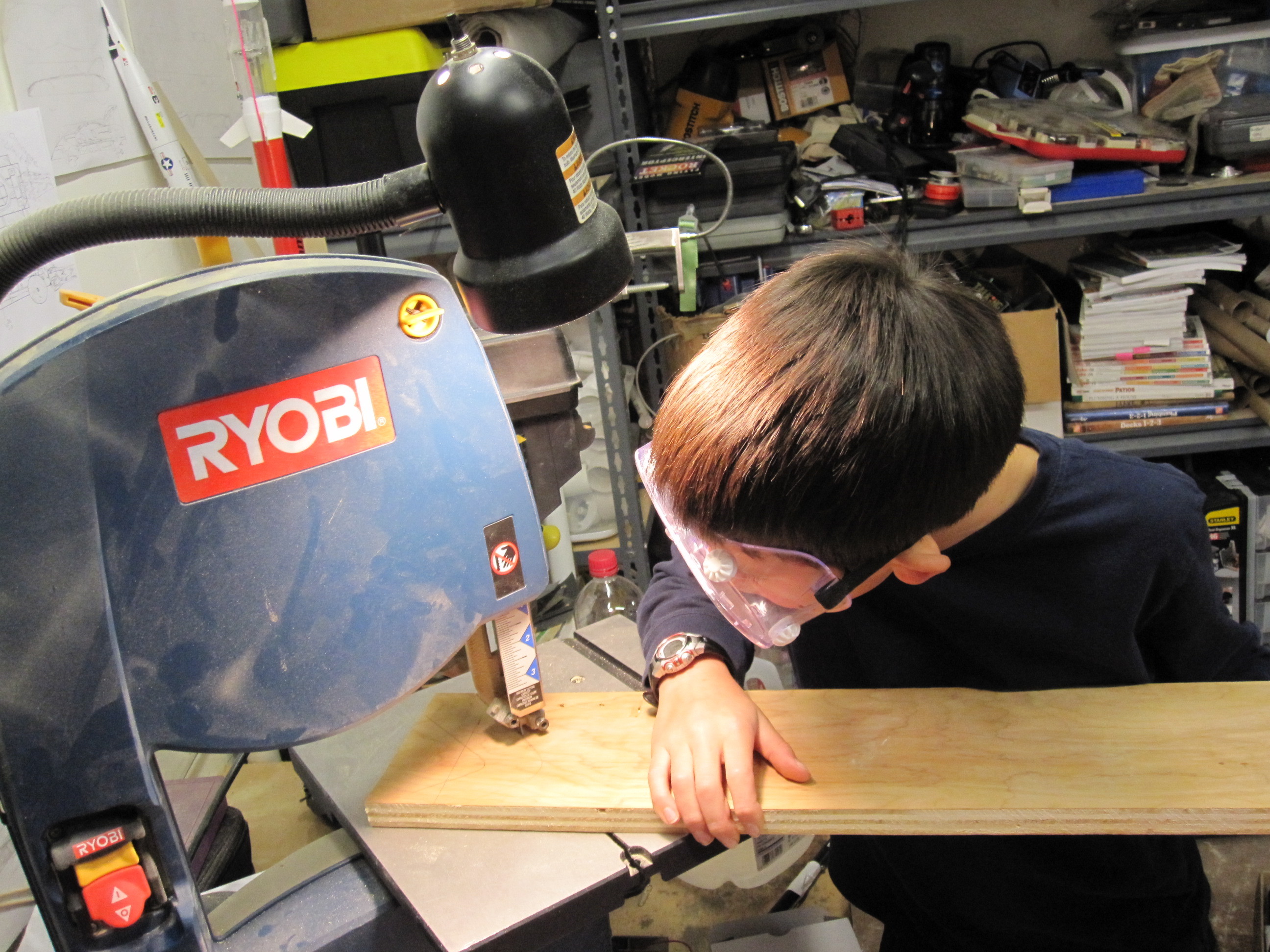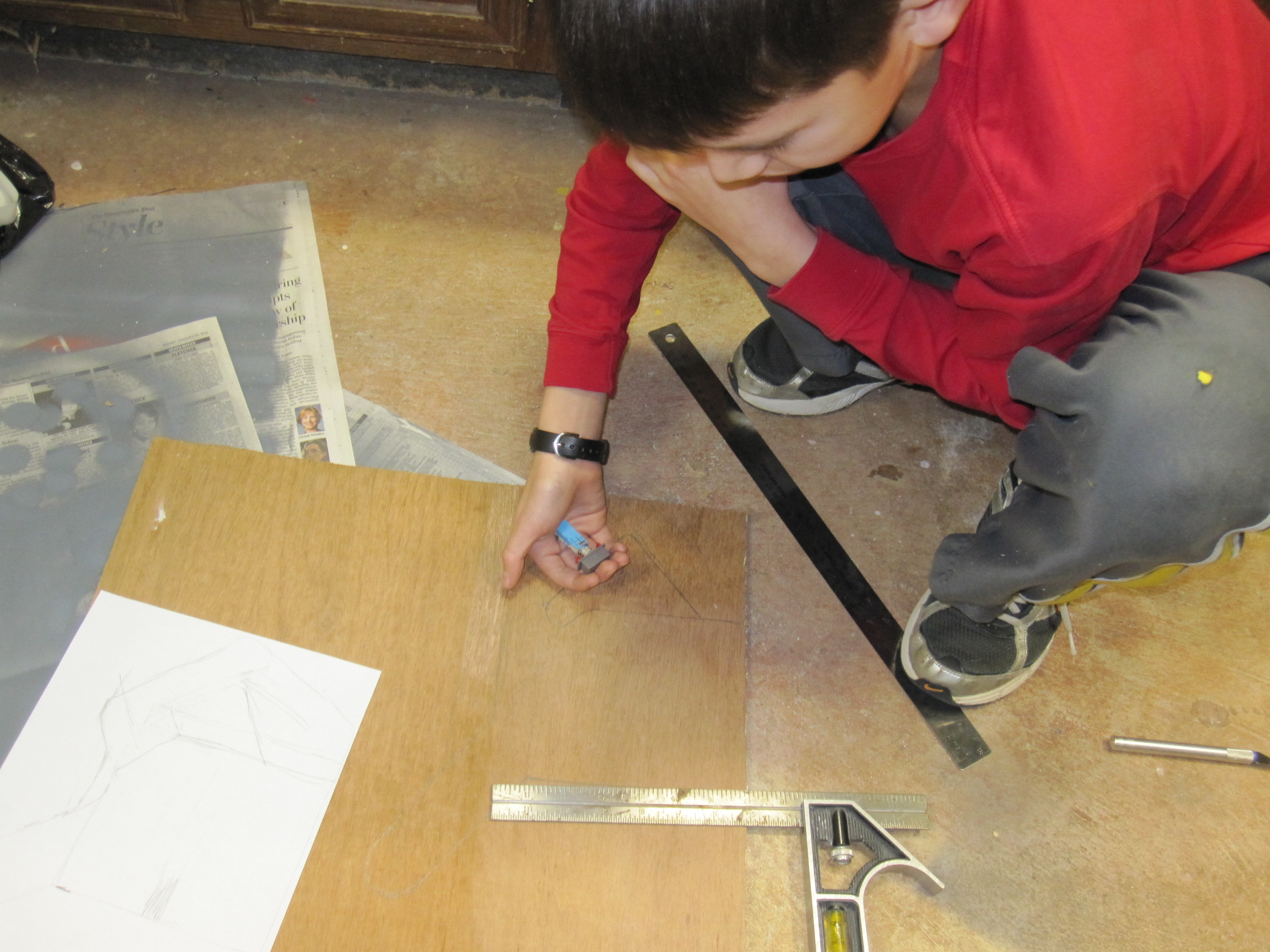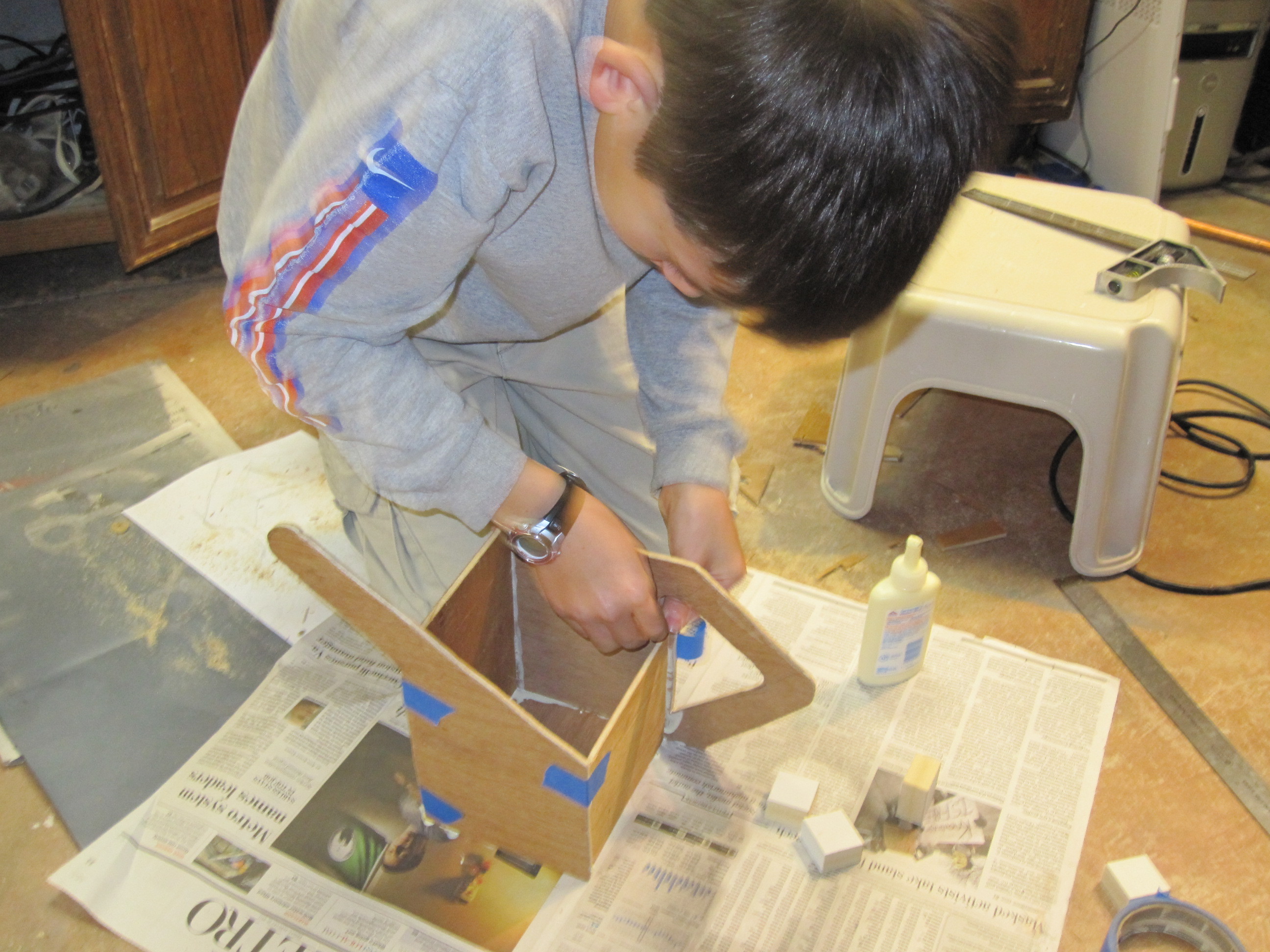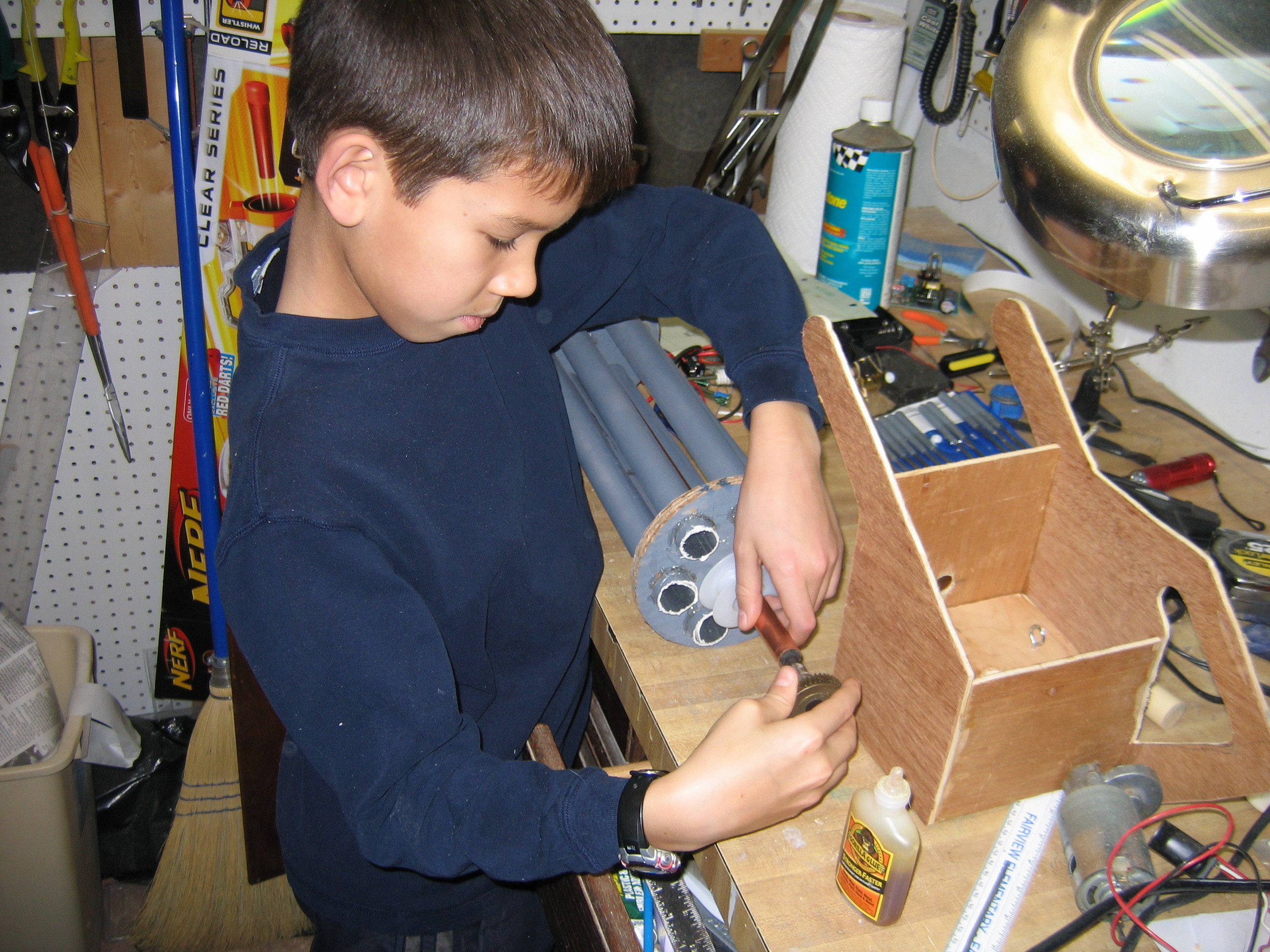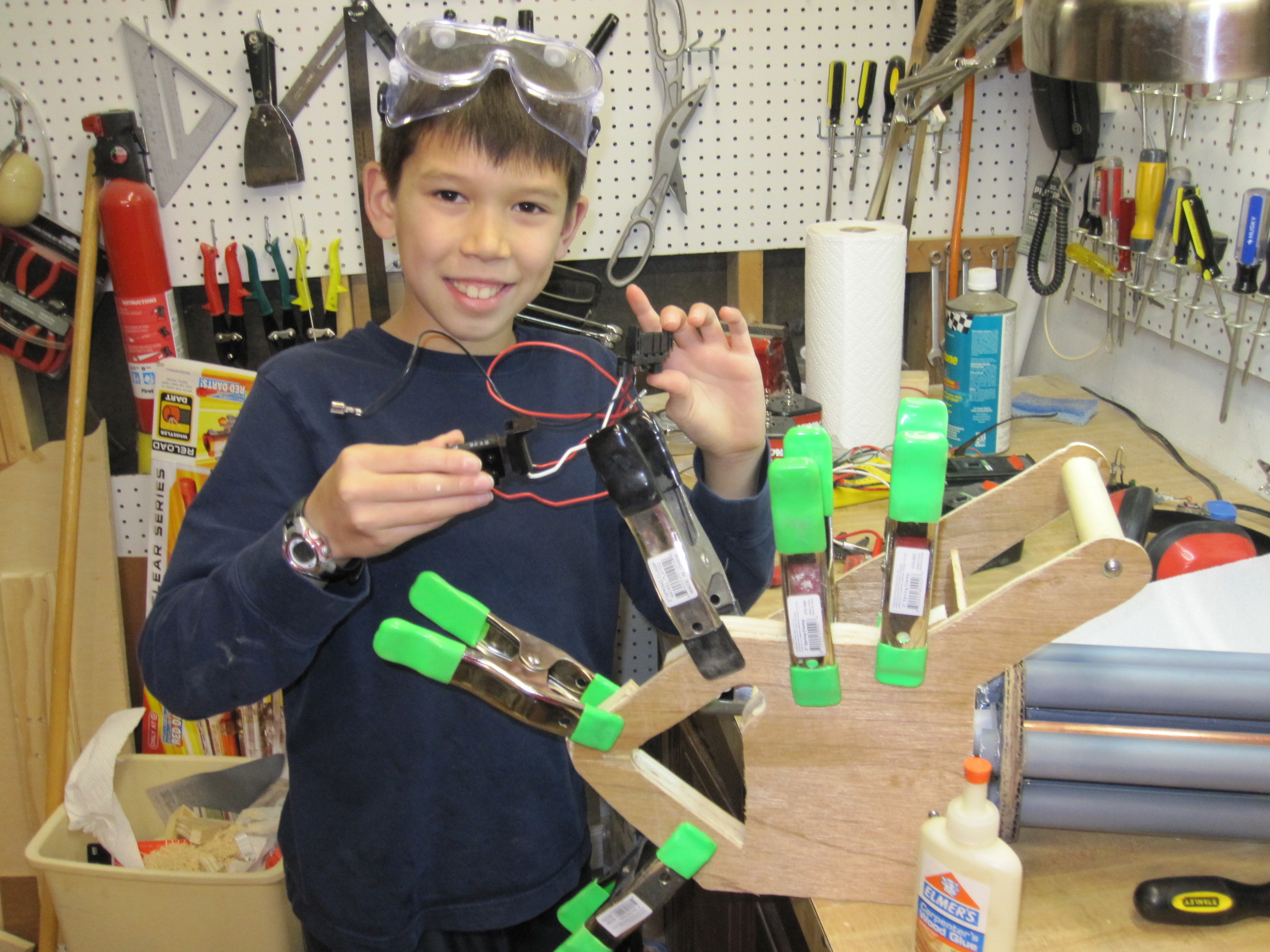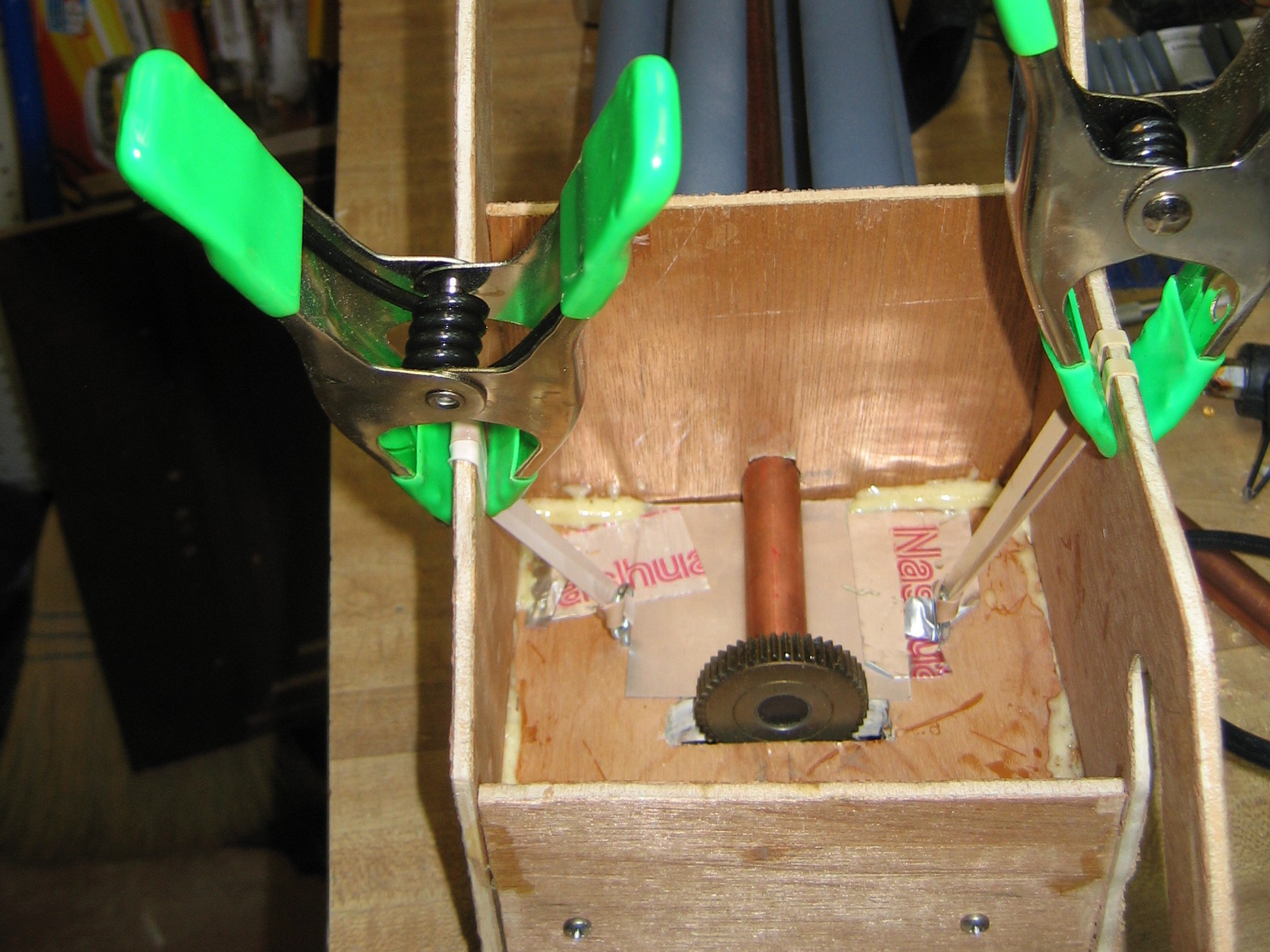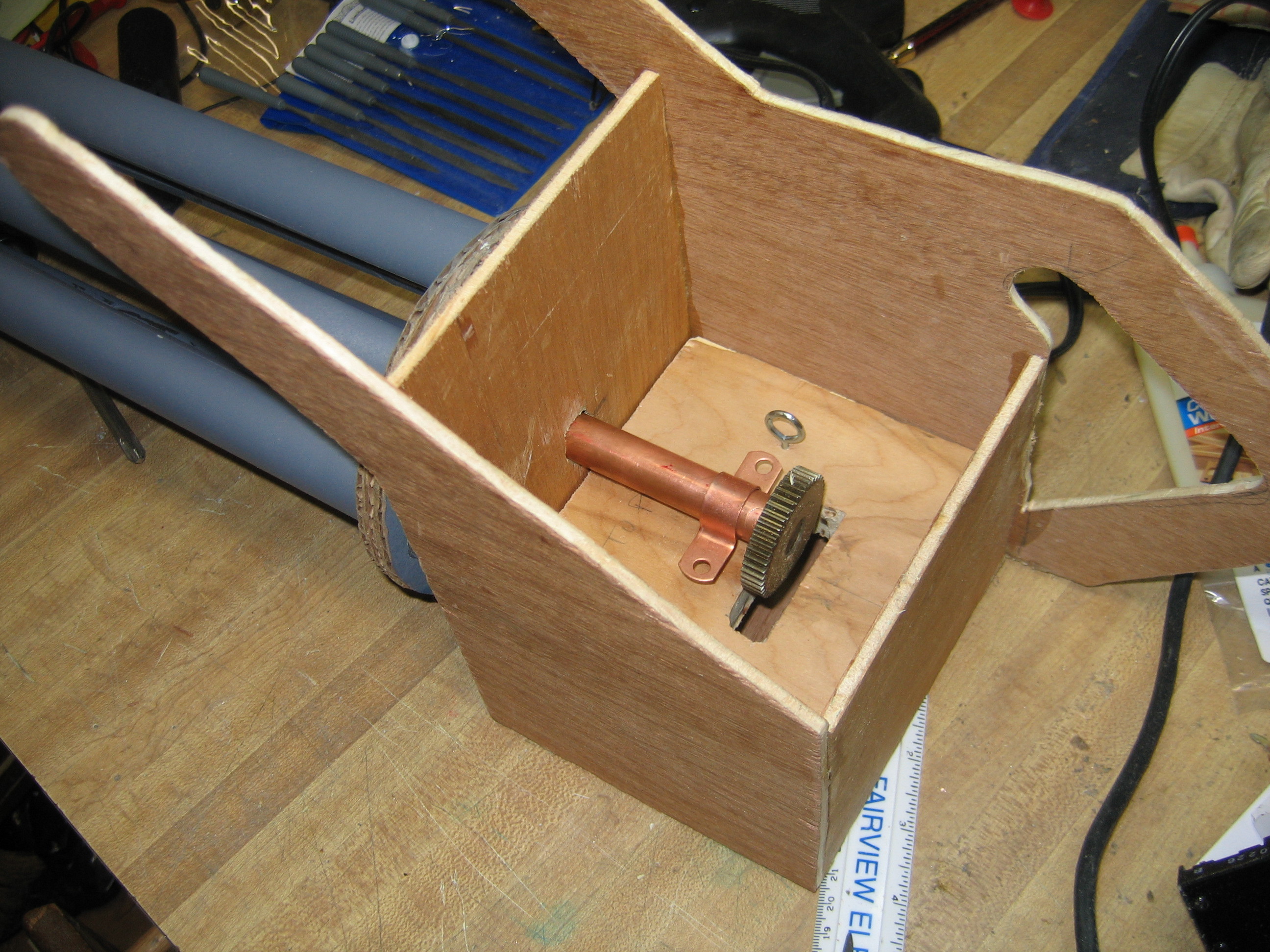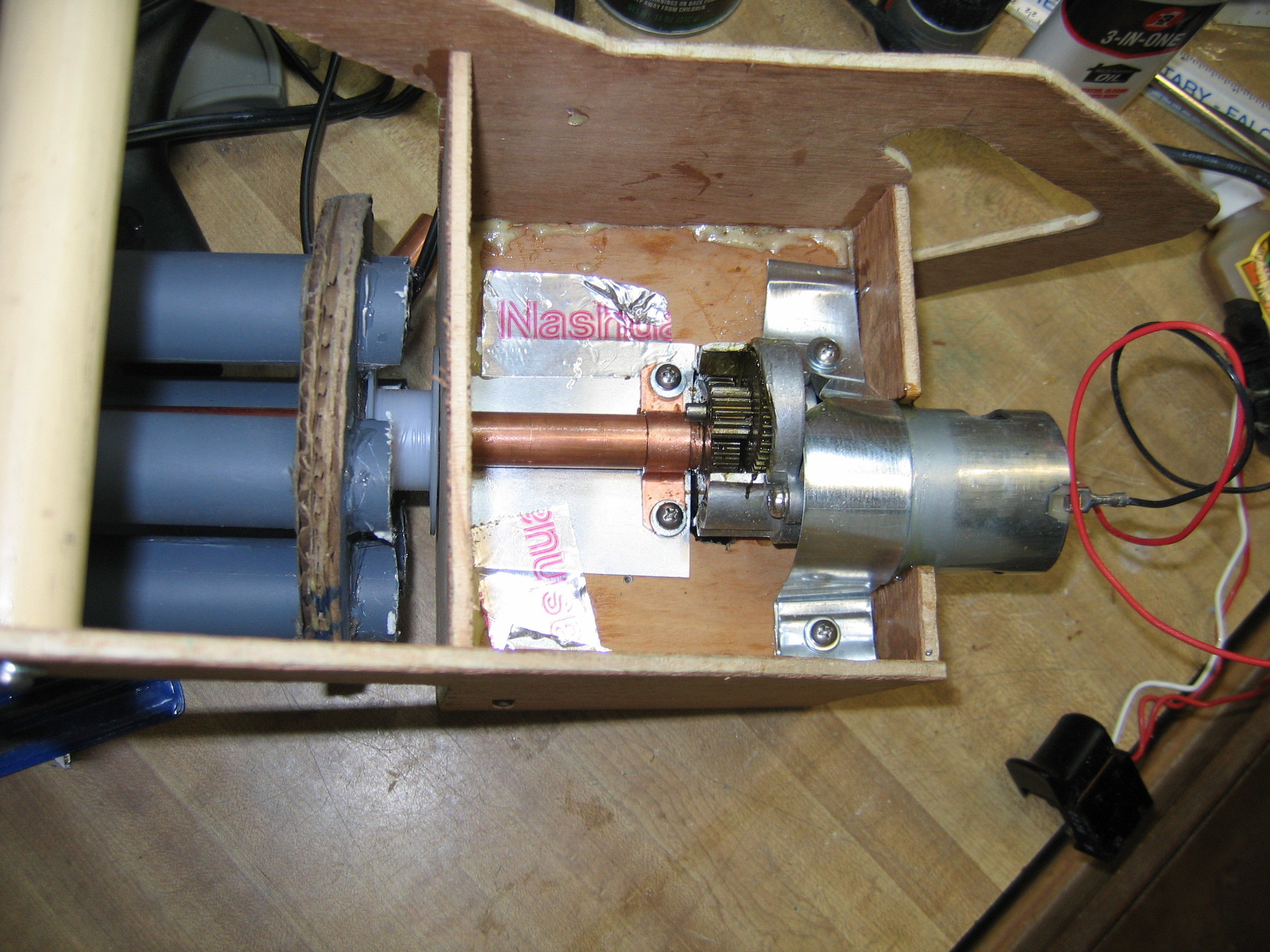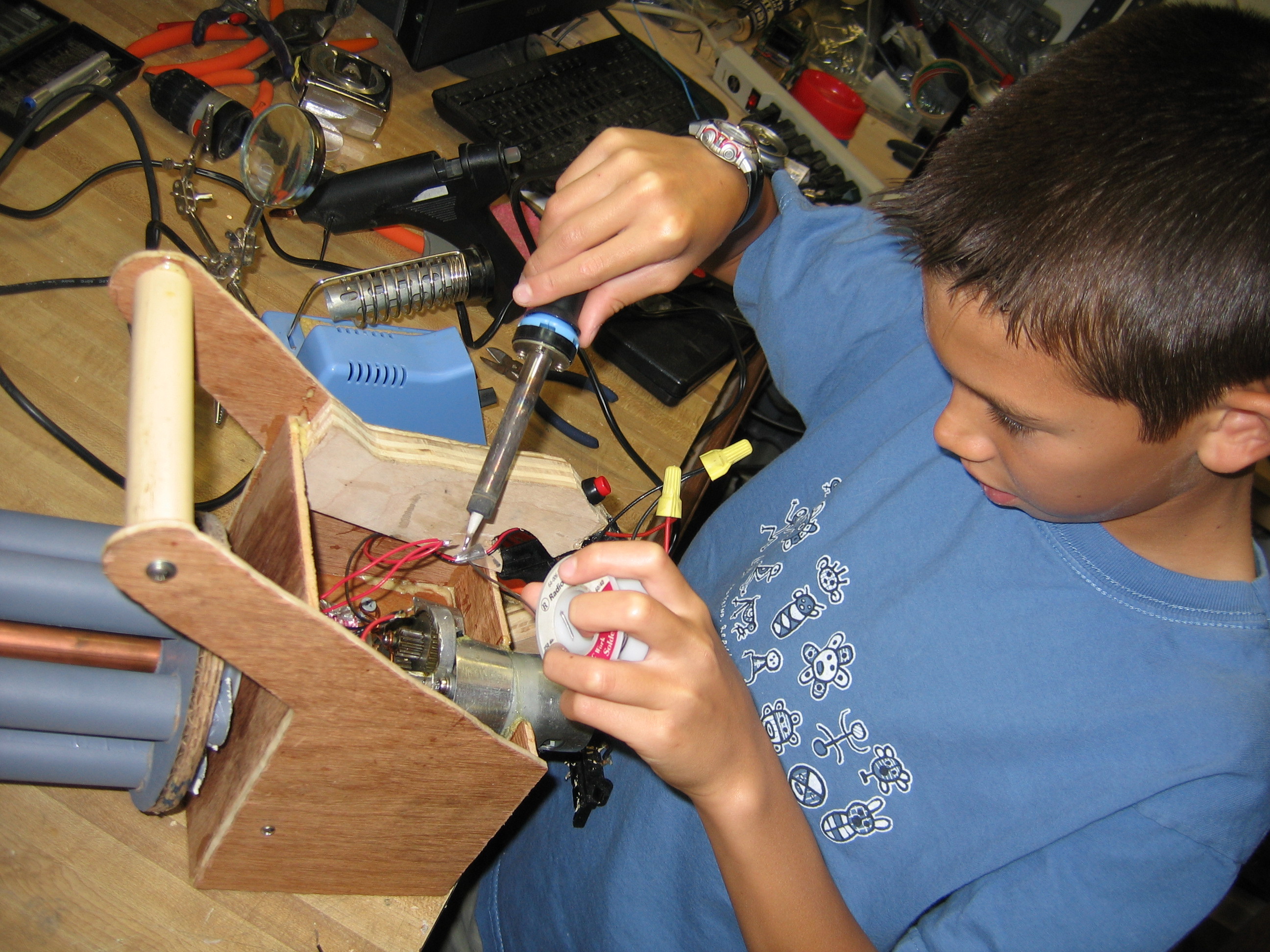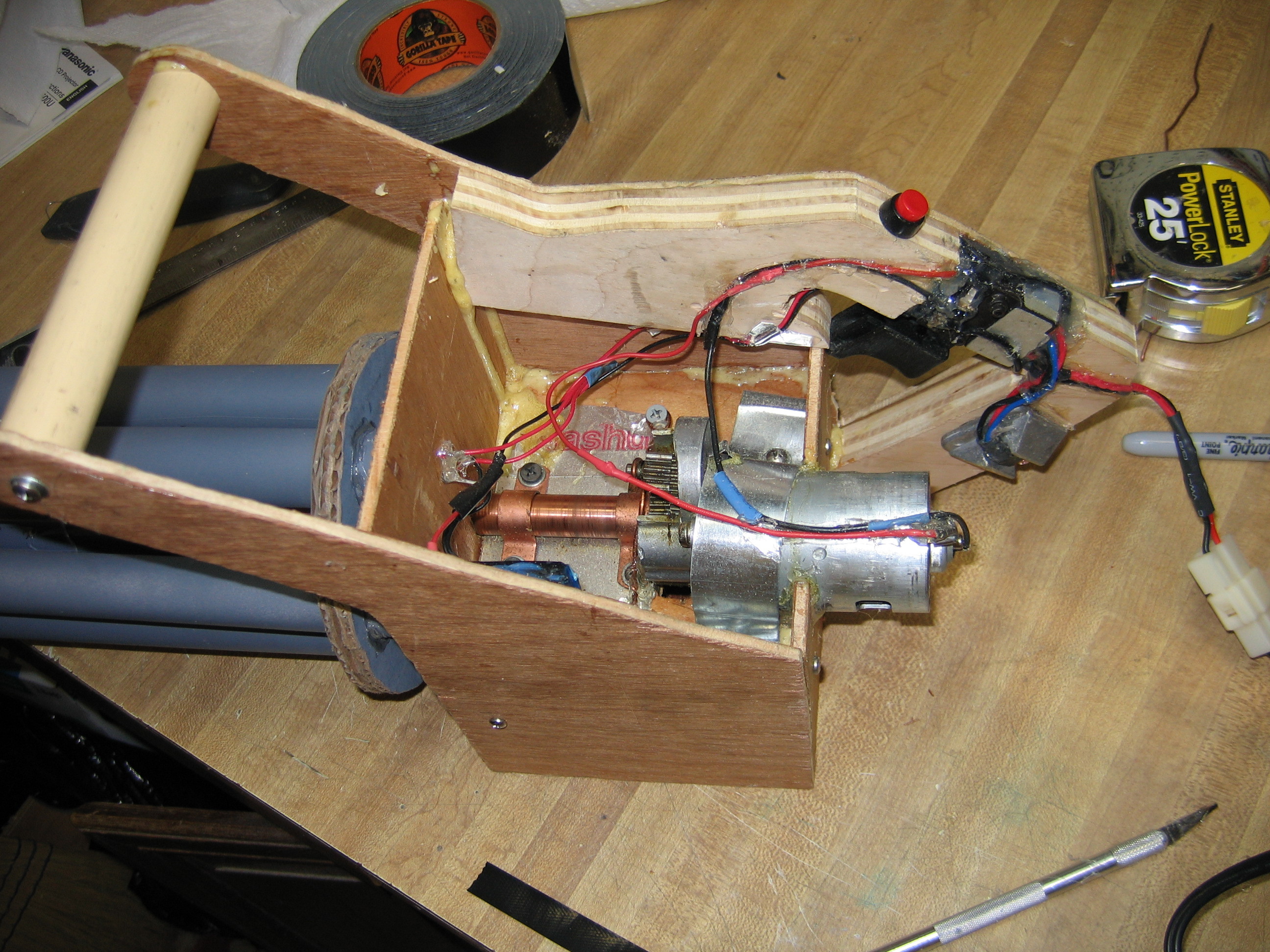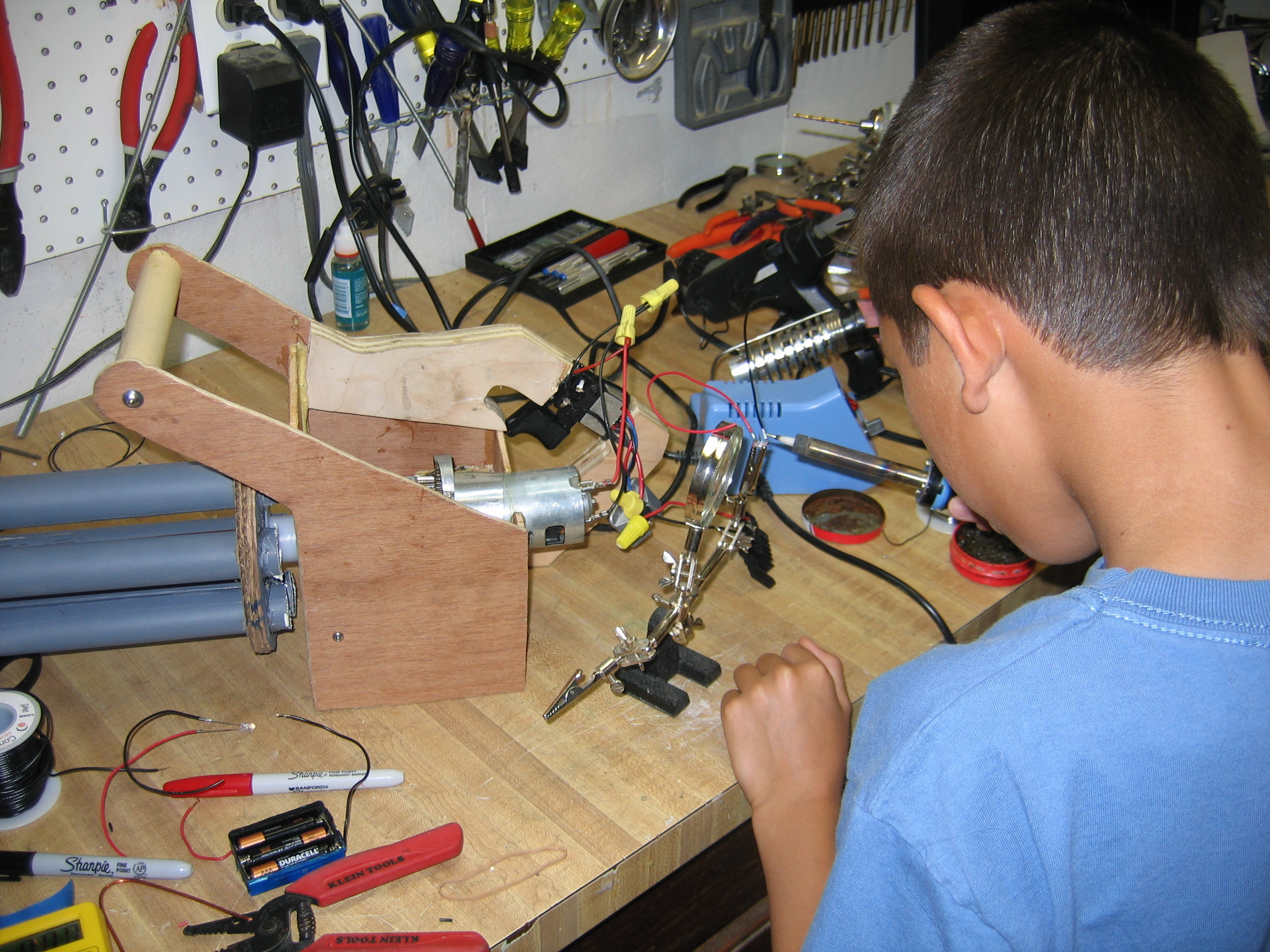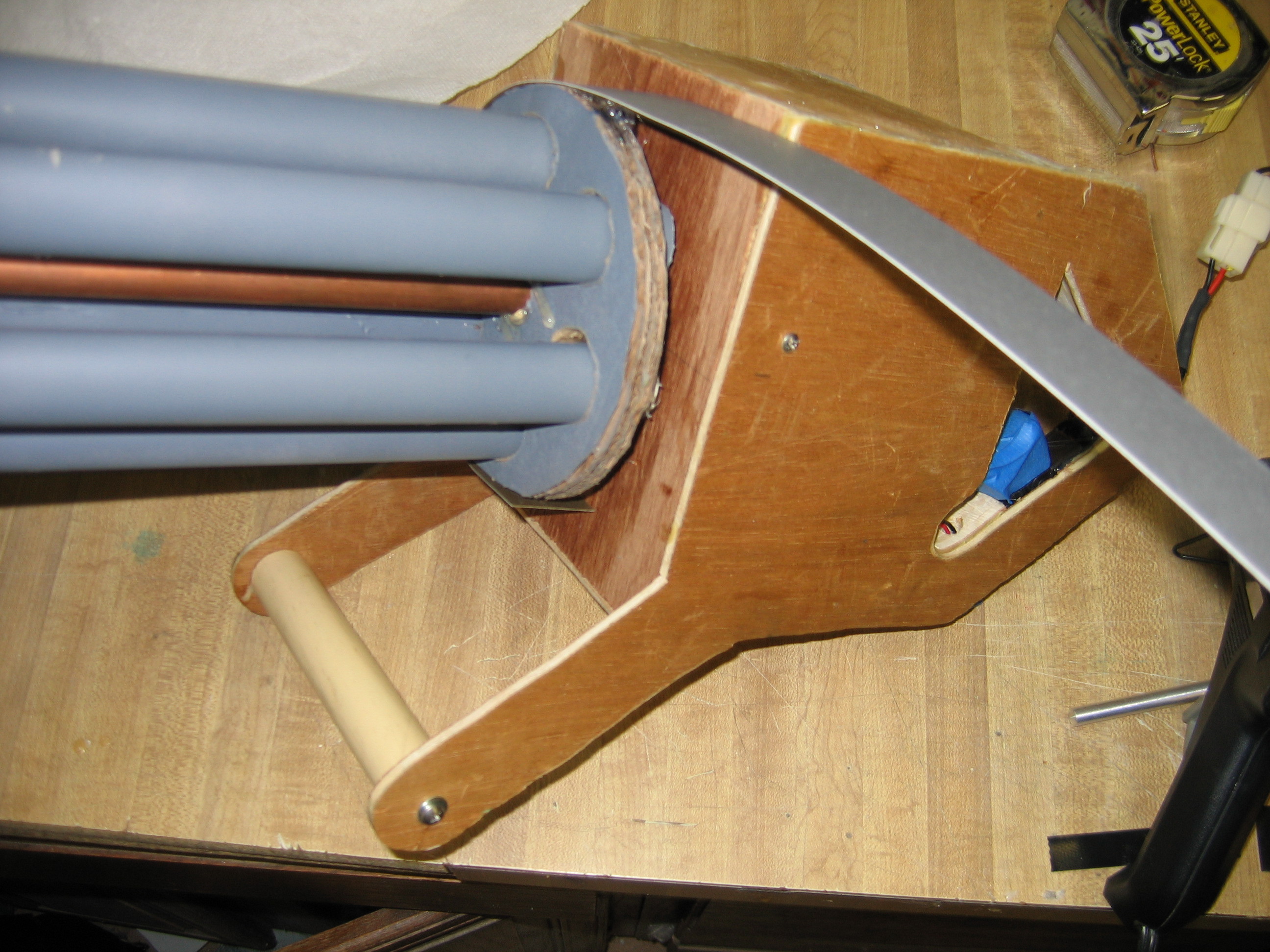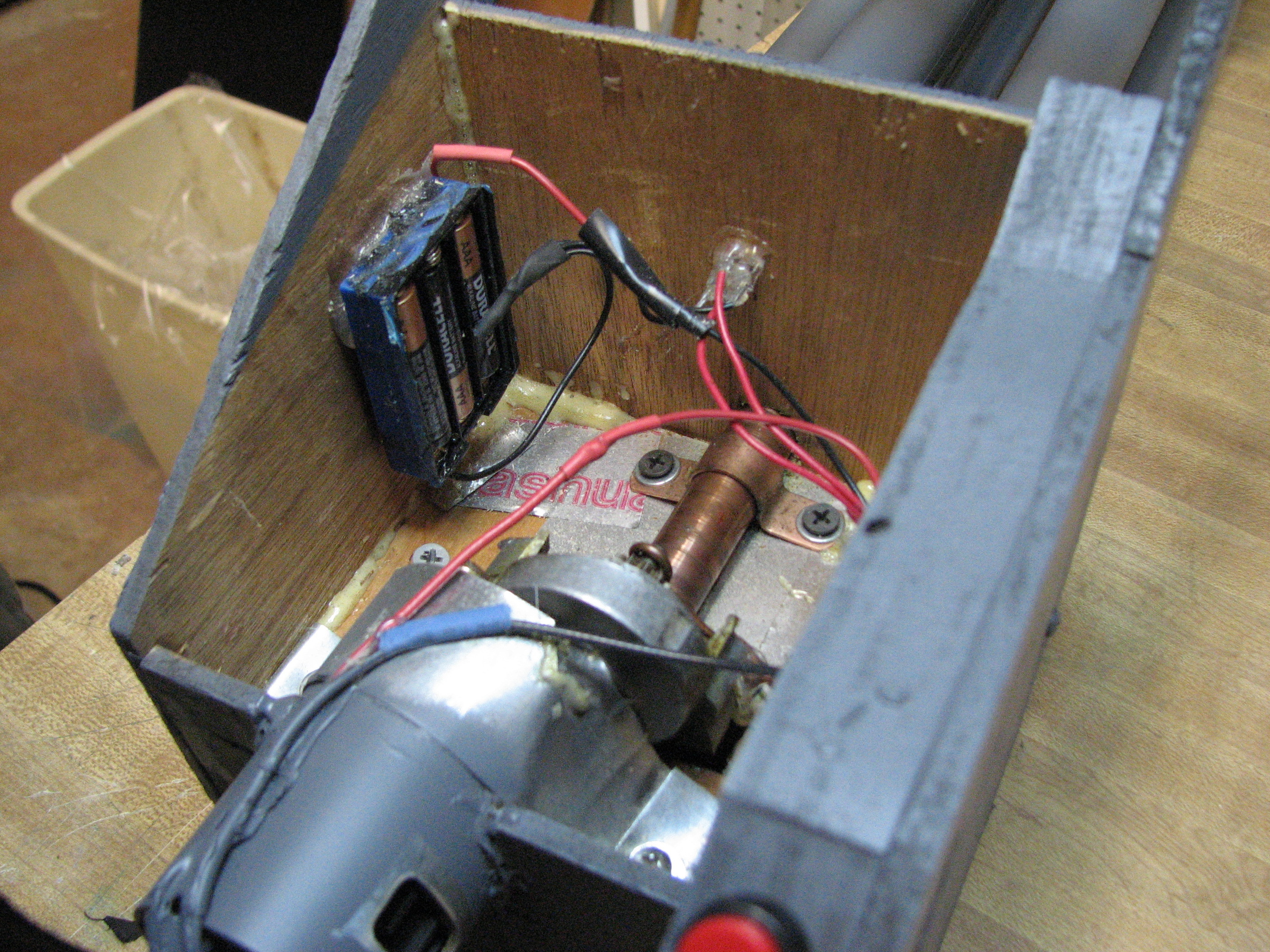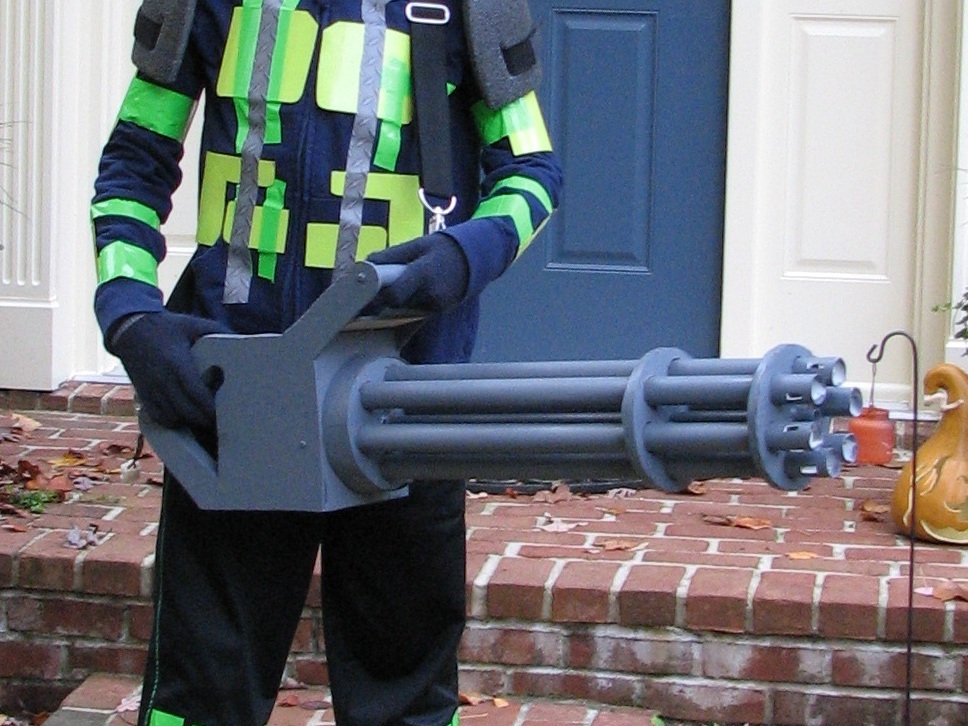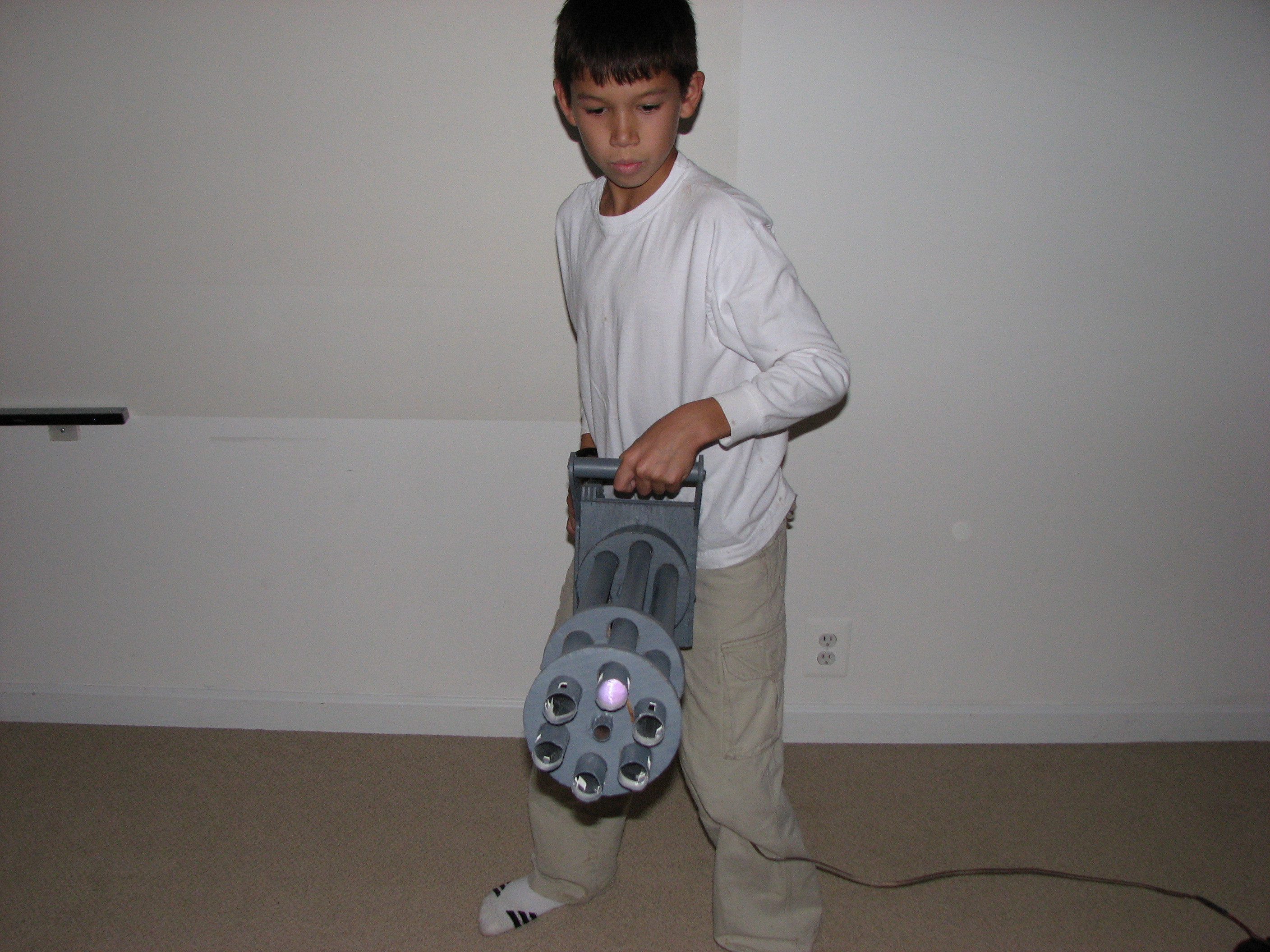The basic construction is relatively simple, with a standard 1/2 inch copper pipe serving as the main support for lightweight tubes (barrels) that spin and emit light when they pass in front of a high intensity LED source. A cheap cordless drill — something from Harbor Freight, for example — would be the easiest way to start.
Projects from Make: Magazine
Mini Gun Madness
Using a repurposed cordless tool (drill/saw), create a realistic and awe-inspriring rotating minigun for Halo, Metal Gear, Infamous or other heavily-armed characters. The barrels rotate using a variable-speed controller, with super-bright LEDs.



